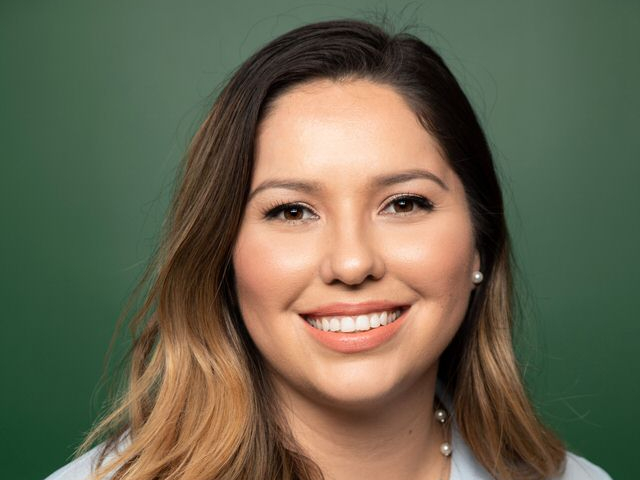Anaheim/OC Hotel & Lodging Association Taps Presidio for Management
As a leading public affairs and communications firm in Southern California, we at Presidio are thrilled to announce that the Anaheim/Orange County...
8 min read
 Samantha Marquez
:
Jun 28, 2021 9:00:00 AM
Samantha Marquez
:
Jun 28, 2021 9:00:00 AM

The word “audit” can sound a bit daunting. However, auditing your school’s social media platforms doesn’t have to be scary. In fact, it’s quite simple and easy to do yourself — especially if you follow the tips that we’ve laid out for you in this blog post.
That being said, before you start your auditing journey, it’s important to understand why auditing is vital for the success of your school’s social media presence. Crucially, it will help you decide exactly where your budget should be going. You might find, for example, that you need more support on Facebook and can therefore allocate more money towards paid advertisements or agency assistance. Auditing your social media will also help you determine where your social media marketing campaigns are falling short and where they are flourishing, allowing you to address any disparities accordingly. It will show you where your metrics are versus where they need to be. Finally, an audit will save you both time and resources, as it will give you a better perspective of your social media presence overall.
So, what are you waiting for? Let’s get started on your school’s social media audit! All you need to do is follow our simple yet effective tips.

This step might seem obvious, but you never know what is there until you look. There may be an account that was set up many years ago that was left forgotten and unused –– one you don’t even know about. That’s why this is a necessary first step. You need to know what you’re working with before you really begin auditing. You can search for your school’s profiles on Google to see what pops up first. After that, go to all the major social media sites (Facebook, Instagram, Twitter, Pinterest, YouTube, Snapchat, etc.) and type your school’s name into the search bar. This is how you’ll identify any unexpected accounts.
Once you locate a profile, determine whether it’s connected to your school. If it isn’t, you may have to go through a process to have it deleted. Check with the account’s terms of service to see what your next steps are if this is the case. Once you’ve dealt with illegitimate profiles, start adding the legitimate ones to an audit spreadsheet. Your spreadsheet will help you keep track of your progress as you go along. Enter the user handle and URL of each account so you can refer to them later.
Now is also an ideal time to make a list of networks on which your school does not have an account. Check newer platforms like TikTok or more localized ones like NextDoor. This step is important for two reasons. First, you might discover a platform that your school is missing out on, and your search could identify new channels that would be useful for parents. This will then allow you to set up a new account that could help you with visibility and engagement. Second, although you may not need to be on every platform, you should still reserve a username anywhere you don’t already have an account. This way, you can ensure that you’ll have access to your school’s name if, in the future, you want to start using it.
This tip is all about establishing your school’s brand across all social media platforms. Now that you have a list of all your school’s accounts, go back to each one and check to see if they all have the same profile picture, bio, handle, address, website URL, and phone number. If there are discrepancies, pick one updated set of information and apply it to all the accounts. This cohesion will make it easier for all your accounts to show up in a Google search and will provide a level of consistency that enables parents to quickly assess whether an account belongs to your school or not.
Creating cohesion across your school’s profiles is crucial, and it is an integral part of the social media audit. Make sure you complete this step before moving on to any other parts of this process.
Once your profiles are consistent, you’ll next need to standardize all login credentials. This is relatively simple, but it can be time-consuming, depending on a couple of factors. If you have access to the email initially used to create your school’s social media platforms, then you’re good to go. You’ll be able to make all passwords uniform with ease, as the information will be sent directly to that email.
However, if multiple different emails have been used, you may run into a bit more trouble. You’ll need to track down the person who made the account you don’t have access to and have them either give you access or change the password themself. You must follow through on this step, no matter how tedious it may be, as there should not be any discrepancies in the logins.
Centralization like this is vital for the security of your accounts. There should only be one person, or at most a few people, with access to the login credentials, and each post should go through them. This will ensure that all posts stay on brand and that nothing inappropriate slips through the cracks. This step also makes it so that you don’t need to change the password every time someone leaves your school or moves to a new role.
To finish this step, indicate the channel “owners” or “managers” on your audit spreadsheet and whether the account has had its login credentials standardized yet. You’ll want to work towards setting up all your accounts with a centralized password by the time you perform your next social media audit.

The next tip for an effective social media audit is to identify your school’s top posts on all platforms. For this step, you’ll need to either look at each platform’s metrics, if you have the ability, or go through each post one by one. Hopefully, you’ve set up your school’s accounts as “Business” accounts, as, by doing so, each platform will provide you with more in-depth analytics, including top post information. If this hasn’t already been set up, consider switching your accounts at this point so that you can make the most of all the platforms’ features.
Here are some key places you can look to for insights on each platform:
Regardless of whether your accounts have analytics available or not, you can still find out which posts performed best by assessing the number of likes, comments, and shares each one has received. Make a note of the top three posts on your audit spreadsheet. “What is the point of this?” you might be wondering. Well, this will help you identify precisely which types of posts your audiences react best to. This will tell you what you should be posting in the future and what your school’s community relates to and connects with online. This tip can make a huge difference in your school’s social media strategy.
This tip takes the previous one a step further. Once you’ve established your top posts, it’s time to look at each platform overall. If you haven't done so already, start creating goals for each of your platforms. Do you want your school’s Instagram to be light and fun, highlighting student and staff achievements? Do you want your Facebook to be more serious and used only to convey important dates and information? Now is the time to decide.
In addition to this, establish some goals for your platforms’ metrics. These could be something like, “I want to increase our number of Twitter followers,” or “I want us to get at least 20 more likes per Instagram post.” This will give you something tangible to track for future audits when you get to the channel performance stage. If you don’t have any goals set at this point, however, you can still assess each platform’s performance by taking note of their analytics or going through and evaluating engagement manually. Either way, it's essential to have an idea of which platform is most popular, as you can then choose to focus on that platform more, to further increase its success, or on the ones that aren’t doing as well, so you can bring them up to the same level.

Once you’ve gotten the hang of analyzing metrics, it’s time to calculate your return on investment (abbreviated as ROI). This applies if you’ve been spending money on paid advertisements, scheduling software, or out-sourced social media management. To evaluate your ROI, check to see if your metrics have improved since you implemented any paid services. You’ll want to find the measure of how much you spent on social media versus how much value your social efforts have contributed to your school. If it looks like your engagement has improved or follower numbers have gone up since you started spending money on your social media, you can mark it down as a good return on investment. However, if things have stayed stagnant or worsened, you may need to reevaluate where your budget is going.
This step will help your school save money and ensure that you allocate resources appropriately.
This tip will look different for everyone. At this point, you need to take a step back and examine all the information you’ve collected throughout the audit.
To help you get started with this step, here are some questions you can ask yourself:
Next, consider how you can use the answers to each of these questions to your advantage. If you’ve learned something significant about your school’s community, you should incorporate that discovery into future posts. If you’ve identified platforms that need a lot of work, think about whether you should focus more effort on those platforms or whether you should deactivate them. In evaluating your ad performances, brainstorm how you can use the data to drive organic results.
Doing a social media audit once just isn’t enough. To truly make the most of all your social media platforms, you’re going to need to do this frequently throughout each year. We recommend that you perform quarterly social media audits. This will allow you to keep track of any changes, good or bad, and ensure that your accounts produce the best ROI possible. It will also show you whether the work you do on the day-to-day aligns with your long-term goals.

As you can now see, a social media audit is about more than just slogging through metrics. It’s about creating the best modes of communication that will allow you to connect and engage with your school’s community.
By following each of these tips, you'll be able to audit your school's social media platforms successfully and, in turn, refine them effectively. Auditing saves you time and money in the long run, so make sure you start as soon as possible. A more efficient stream of social channels is just a few steps away!
Caroline Baetkey contributed to this post.

Samantha Marquez
Director of Public Agency Services
Samantha Marquez is a community relations and engagement specialist with over six years of experience in legislative affairs and targeted policy messaging on the local and state level. Before coming to Presidio, Samantha served as the District Director to the Majority Leader of the California State Assembly, where she served as a liaison between local public agencies and the state government. In the Assembly, Samantha was the Majority Leader’s principal aide for K-12 education and transportation.
 Caroline Baetkey
Caroline Baetkey
Intern
Caroline is a senior at UCLA, where she is pursuing a B.A. in History with minors in Film, Television & Digital Media and Digital Humanities. She is experienced in a diverse array of communications, including fashion public relations, influencer outreach, and social media marketing. After she graduates in Spring 2021, Caroline plans on working in PR and Marketing.

As a leading public affairs and communications firm in Southern California, we at Presidio are thrilled to announce that the Anaheim/Orange County...

Presidio is excited to welcome the Arts Council for Long Beach (ACLB) as a new client for our government relations, strategic communications,...

Presidio, a leading public affairs firm, is pleased to announce that we have been retained by the California Association of Code Enforcement...